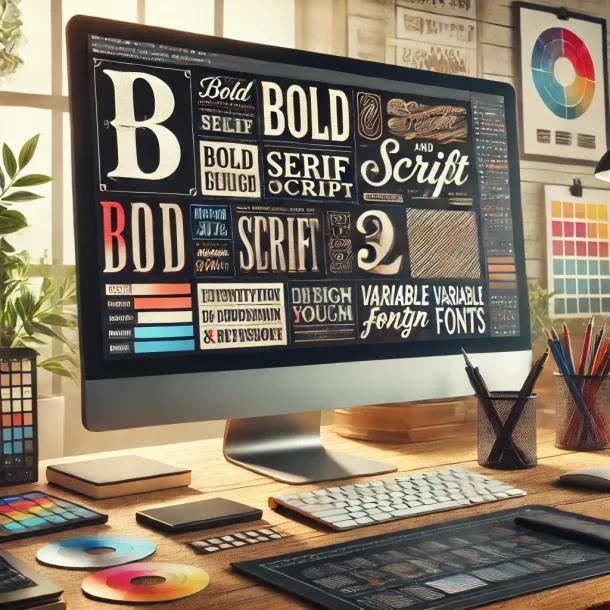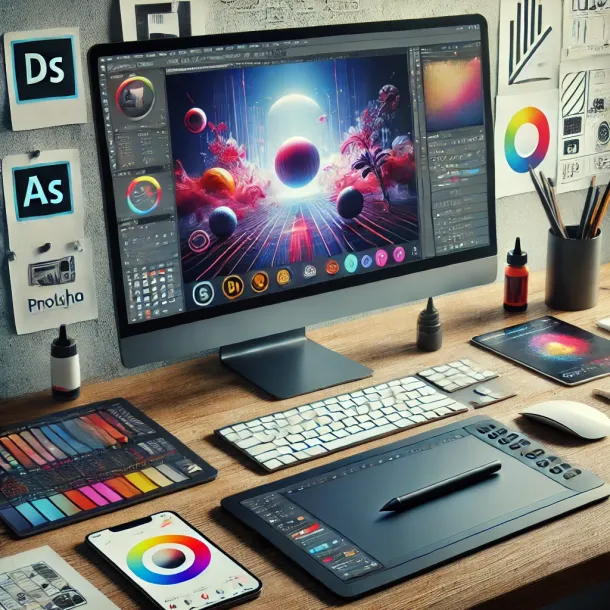Sustainable Design: Creating Eco-Friendly Products
Sustainable Design: Creating Eco-Friendly Products
As the global environmental crisis continues to intensify, the demand for sustainable design has never been more urgent. Sustainable design is not just a trend; it is a necessity for the future of our planet. By creating eco-friendly products, designers can significantly reduce the environmental impact of their work, promote resource conservation, and foster a culture of sustainability. This article delves into the principles of sustainable design, explores the benefits of creating eco-friendly products, and provides practical strategies for designers to integrate sustainability into their work.
Understanding Sustainable Design
Sustainable design is an approach to creating products, buildings, and systems that are environmentally responsible and resource-efficient throughout their lifecycle. This includes the design process, material selection, manufacturing, use, and eventual disposal or recycling of the product. The goal of sustainable design is to minimize negative environmental impacts while maximizing the positive social and economic benefits of the product.
Key Principles of Sustainable Design
Sustainable design is guided by several key principles that ensure the creation of eco-friendly products. These principles include:
- Resource Efficiency: Designing products that use materials, energy, and water efficiently throughout their lifecycle.
- Reducing Waste: Minimizing waste in the production process and designing products that can be reused, recycled, or composted at the end of their life.
- Longevity and Durability: Creating products that are built to last, reducing the need for frequent replacements and minimizing resource consumption.
- Eco-Friendly Materials: Using materials that are sustainably sourced, non-toxic, and have a low environmental impact.
- Energy Efficiency: Designing products that consume less energy during their use, production, and transportation.
- Lifecycle Thinking: Considering the entire lifecycle of a product, from raw material extraction to disposal, to understand and minimize its environmental impact.
The Benefits of Sustainable Design
Adopting sustainable design practices offers numerous benefits for the environment, consumers, and businesses. These benefits include:
Environmental Benefits
The most obvious benefit of sustainable design is its positive impact on the environment. By creating eco-friendly products, designers can help reduce pollution, conserve natural resources, and mitigate climate change. Sustainable design practices also promote biodiversity by reducing habitat destruction and minimizing the use of harmful chemicals.
For example, using recycled materials in product design reduces the need for virgin resources, such as wood, metal, and plastic. This helps preserve forests, reduce mining activities, and decrease the amount of waste sent to landfills. Additionally, designing energy-efficient products reduces greenhouse gas emissions, contributing to the fight against global warming.
Consumer Benefits
Consumers are becoming increasingly aware of the environmental impact of their purchases, and many are seeking out eco-friendly products. By offering sustainable products, businesses can meet this growing demand and attract environmentally conscious consumers. Sustainable design also promotes healthier living by reducing exposure to harmful chemicals and promoting the use of non-toxic materials.
For example, products made from organic cotton or bamboo are free from harmful pesticides and chemicals, making them safer for consumers and the environment. Energy-efficient appliances and electronics not only reduce energy consumption but also lower utility bills, providing long-term savings for consumers.
Business Benefits
Sustainable design can also offer significant benefits for businesses. By adopting eco-friendly practices, companies can enhance their brand reputation, differentiate themselves from competitors, and gain a competitive advantage in the marketplace. Sustainable design can also lead to cost savings by reducing material and energy consumption, minimizing waste, and improving operational efficiency.
Moreover, businesses that prioritize sustainability are better positioned to comply with environmental regulations and avoid potential fines or penalties. They may also benefit from government incentives, such as tax credits or grants, for adopting green practices.
Challenges in Sustainable Design
While the benefits of sustainable design are clear, there are also challenges that designers and businesses must overcome to create truly eco-friendly products.
Material Selection
One of the primary challenges in sustainable design is selecting eco-friendly materials that meet both environmental and performance criteria. Sustainable materials may be more expensive or difficult to source, and they may not always perform as well as traditional materials. Designers must balance the environmental impact of materials with factors such as durability, functionality, and aesthetics.
Cost Considerations
Sustainable design can sometimes be more expensive upfront due to the cost of eco-friendly materials, energy-efficient technologies, and sustainable production processes. However, these costs can often be offset by long-term savings in energy, waste management, and resource consumption. Additionally, businesses may face resistance from consumers who are unwilling to pay a premium for sustainable products, requiring designers to find cost-effective solutions that do not compromise on sustainability.
Complex Supply Chains
Sustainable design requires careful consideration of the entire supply chain, from raw material sourcing to manufacturing, transportation, and disposal. Ensuring that all components of a product are sustainably sourced and produced can be complex and time-consuming. Designers must work closely with suppliers and manufacturers to verify the sustainability of materials and processes, and they must be vigilant in avoiding greenwashing or false sustainability claims.
Strategies for Creating Eco-Friendly Products
Despite the challenges, there are several strategies that designers can use to create sustainable, eco-friendly products. These strategies involve careful planning, innovation, and a commitment to sustainability throughout the design process.
1. Conduct a Lifecycle Assessment
A lifecycle assessment (LCA) is a tool that helps designers evaluate the environmental impact of a product throughout its entire lifecycle, from raw material extraction to disposal. By conducting an LCA, designers can identify areas where improvements can be made to reduce the product’s environmental footprint.
For example, an LCA may reveal that a product’s greatest environmental impact comes from its energy consumption during use. In this case, designers could focus on improving the product’s energy efficiency, such as by incorporating low-power technologies or designing the product to be easily repaired or upgraded.
2. Choose Sustainable Materials
Selecting sustainable materials is a critical aspect of creating eco-friendly products. Designers should prioritize materials that are renewable, recyclable, or biodegradable, and that have a low environmental impact throughout their lifecycle. Some examples of sustainable materials include:
- Recycled Materials: Using materials that have been recycled from post-consumer or post-industrial waste, such as recycled plastic, glass, or metal.
- Biodegradable Materials: Using materials that can break down naturally in the environment, such as bioplastics, natural fibers, or paper.
- Sustainably Sourced Materials: Using materials that are harvested or produced in an environmentally responsible manner, such as FSC-certified wood, organic cotton, or bamboo.
Designers should also consider the transportation and processing of materials, as these factors can significantly impact a product’s overall sustainability.
3. Design for Durability and Longevity
Creating products that are built to last is another important strategy for sustainable design. Durable products reduce the need for frequent replacements, which conserves resources and minimizes waste. Designers should prioritize high-quality materials, robust construction, and timeless aesthetics that ensure the product remains functional and desirable for years to come.
In addition to durability, designers can also consider modularity and upgradability. Products that can be easily repaired, upgraded, or repurposed are more sustainable, as they can extend the product’s lifespan and reduce the need for new resources.
4. Minimize Waste in Production
Reducing waste in the production process is essential for sustainable design. This can be achieved through various methods, such as:
- Lean Manufacturing: Implementing lean manufacturing techniques to optimize production processes, reduce material waste, and improve efficiency.
- Zero-Waste Design: Designing products in a way that minimizes or eliminates waste, such as by using digital patterns in fashion design or creating products that can be manufactured with minimal offcuts.
- Circular Economy Practices: Adopting circular economy principles, where products are designed to be reused, repaired, or recycled at the end of their life, rather than being disposed of.
Designers can also explore innovative manufacturing techniques, such as 3D printing, which can reduce material waste and allow for more precise and efficient production.
5. Prioritize Energy Efficiency
Energy efficiency is a key consideration in sustainable design, both during the production process and in the product’s use. Designers can reduce energy consumption by:
- Optimizing Manufacturing Processes: Implementing energy-efficient technologies and practices in the production process, such as using renewable energy sources, optimizing machinery, or reducing energy-intensive processes.
- Designing Energy-Efficient Products: Creating products that consume less energy during use, such as energy-efficient appliances, electronics, or lighting.
- Promoting Sustainable Use: Encouraging consumers to use products in a sustainable manner, such as by providing instructions on energy-saving settings or offering incentives for energy-efficient behavior.
6. Educate and Engage Consumers
Educating consumers about the benefits of sustainable products is essential for driving demand and encouraging responsible consumption. Designers and businesses can engage consumers through transparent communication, such as by providing information about the product’s sustainability features, lifecycle impact, and eco-friendly practices.
For example, designers can use labeling, packaging, or marketing materials to highlight the sustainable attributes of a product, such as its use of recycled materials, energy efficiency, or low environmental impact. By educating consumers and making sustainability a key part of the product’s value proposition, designers can help shift consumer behavior towards more eco-friendly choices.
Conclusion
Sustainable design is a critical approach for creating eco-friendly products that meet the needs of both consumers and the environment. By embracing the principles of resource efficiency, waste reduction, durability, and energy efficiency, designers can create products that have a positive impact on the planet and contribute to a more sustainable future.
While there are challenges in implementing sustainable design practices, the benefits for the environment, consumers, and businesses are significant. As the demand for eco-friendly products continues to grow, designers have an opportunity to lead the way in creating innovative, sustainable solutions that benefit both people and the planet.
By conducting lifecycle assessments, choosing sustainable materials, designing for durability, minimizing waste, prioritizing energy efficiency, and engaging consumers, designers can create products that are not only environmentally responsible but also economically viable and socially impactful.


